The Vilbil Blog
Signs of Compassion: Miggs Burroughs and the Art of Speaking Without Words
 Part I of our ongoing series explores the origins of Signs of Compassion, a visionary project by artist Miggs Burroughs that transforms Emily Dickinson’s poetry into a visual language of empathy. Using lenticular imagery and American Sign Language, Burroughs creates a sequence of gestures that speak directly to the viewer — emotionally, poetically, and universally.
Part I of our ongoing series explores the origins of Signs of Compassion, a visionary project by artist Miggs Burroughs that transforms Emily Dickinson’s poetry into a visual language of empathy. Using lenticular imagery and American Sign Language, Burroughs creates a sequence of gestures that speak directly to the viewer — emotionally, poetically, and universally. From a quiet visit to Dickinson’s home to a large-scale installation at the United Nations, this article traces the evolution of a concept that bridges art and humanity. Now reimagined through The Vilbil’s digital curation, the work reaches new audiences with renewed clarity and resonance.
Robert Richardson: A Life Composed in Visual Language
 Before his digital works reached global audiences, Robert Richardson’s journey began with poetry, small press publishing, and a fascination with visual language. In this first feature, he reflects on the formative moments that shaped his practice — from Bauhaus influences to his own twist on Constructive Art.
Before his digital works reached global audiences, Robert Richardson’s journey began with poetry, small press publishing, and a fascination with visual language. In this first feature, he reflects on the formative moments that shaped his practice — from Bauhaus influences to his own twist on Constructive Art.
 What if compassion could be seen — not just felt?
What if compassion could be seen — not just felt?Artist Miggs Burroughs explores this question through mesmerizing lenticular portraits that shift with every step, revealing the silent poetry of American Sign Language.
Paired with Emily Dickinson’s verse and a tactile Braille sculpture by Mark Yurkiw, the exhibit invites both sight and touch into a shared emotional experience.
What began in a small library has become a global message — one you can now see, feel, and never forget.
When Art Begins to Move: The Emotional Power of Lenticular Art
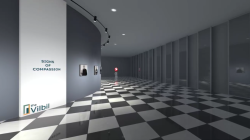 Lenticular art is redefining how we experience visual storytelling.
Lenticular art is redefining how we experience visual storytelling.Miggs Burroughs’ Signs of Compassion, now featured at The Vilbil, blends motion and meaning through American Sign Language. It’s a striking example of how digital platforms are giving new life to interactive, emotionally resonant art.
Why Digital Museums Are Becoming the New Artist Studios
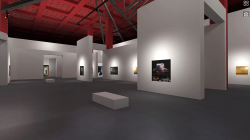 What if the artist’s studio wasn’t a room, but a realm?
What if the artist’s studio wasn’t a room, but a realm?As the boundaries between creation and exhibition blur, digital museums are emerging as the new creative spaces for artists. No longer confined to physical walls, today’s studios are collaborative, customizable, and globally accessible. This article explores how platforms like The Vilbil are reshaping the way artists work, share, and connect — turning virtual galleries into living, evolving studios for the 21st century.
Future-Proofing Your Practice: Why Every Artist Needs a Digital Strategy
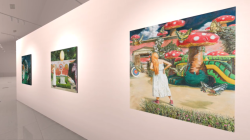 Art today lives as much on screens as it does on walls. Virtual museums, NFTs, and VR exhibitions are no longer optional extras — they are the infrastructure that ensures visibility, longevity, and relevance. Platforms like The Vilbil demonstrate how digital strategy future-proofs an artist’s practice, transforming works into experiences that endure in a global, connected world.
Art today lives as much on screens as it does on walls. Virtual museums, NFTs, and VR exhibitions are no longer optional extras — they are the infrastructure that ensures visibility, longevity, and relevance. Platforms like The Vilbil demonstrate how digital strategy future-proofs an artist’s practice, transforming works into experiences that endure in a global, connected world.
Digital-Native Art: Where Language, Culture, and Technology Converge
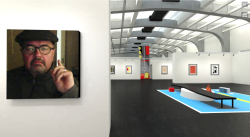 Art’s history is inseparable from innovation, and the latest chapter is the emergence of digital-native works born in code, networks, and screens. British artist Robert Richardson embodies this movement, reinventing text as a fluid digital form showcased worldwide. With new platforms like The Vilbil, such art is stepping into the spotlight as a defining cultural force of our digital era.
Art’s history is inseparable from innovation, and the latest chapter is the emergence of digital-native works born in code, networks, and screens. British artist Robert Richardson embodies this movement, reinventing text as a fluid digital form showcased worldwide. With new platforms like The Vilbil, such art is stepping into the spotlight as a defining cultural force of our digital era.
Sustainability in the Virtual Museum Age
 On World Environment Day 2025 (June 5th), the art world is reminded that sustainability is no longer a choice but a necessity. Virtual museums reduce the carbon costs of shipping, storage, and global travel, yet they also bring hidden challenges through servers and blockchain. Projects like The Vilbil show how digital platforms can balance innovation with environmental responsibility, pointing the way toward a greener cultural future.
On World Environment Day 2025 (June 5th), the art world is reminded that sustainability is no longer a choice but a necessity. Virtual museums reduce the carbon costs of shipping, storage, and global travel, yet they also bring hidden challenges through servers and blockchain. Projects like The Vilbil show how digital platforms can balance innovation with environmental responsibility, pointing the way toward a greener cultural future.
CAVE CANEM and the Rise of Phygital Art
 Phygital art blurs the line between object and token, matter and code. CAVE CANEM by NHOMM shows how a sculpture can live both on a plinth and on the blockchain — reshaping ideas of ownership, presence, and access.
Phygital art blurs the line between object and token, matter and code. CAVE CANEM by NHOMM shows how a sculpture can live both on a plinth and on the blockchain — reshaping ideas of ownership, presence, and access.
New Frontiers in Art: Trends Shaping the Digital Museum
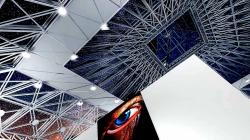 Art has always adapted to the tools of its time — from oil paint to photography to immersive technologies. Today, digital museums represent the next step, embracing trends like digital-native art, VR, NFTs, and inclusivity. They are not a replacement for physical spaces, but a powerful extension that makes culture more dynamic, accessible, and global.
Art has always adapted to the tools of its time — from oil paint to photography to immersive technologies. Today, digital museums represent the next step, embracing trends like digital-native art, VR, NFTs, and inclusivity. They are not a replacement for physical spaces, but a powerful extension that makes culture more dynamic, accessible, and global.
The Benefits of the Digital Museum Format
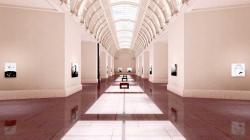 The museum of the future is here — and it lives both inside and beyond its walls. Digital museums combine precision rendering, interactivity, and global access to create cultural spaces that anyone can enter, anytime, from anywhere. They reveal hidden collections, engage younger generations, and expand opportunities for artists and institutions alike. More than a substitute, they are a powerful extension of the museum experience.
The museum of the future is here — and it lives both inside and beyond its walls. Digital museums combine precision rendering, interactivity, and global access to create cultural spaces that anyone can enter, anytime, from anywhere. They reveal hidden collections, engage younger generations, and expand opportunities for artists and institutions alike. More than a substitute, they are a powerful extension of the museum experience.
Introducing Interactive Streaming: The Future of Virtual Museums and Galleries
 Virtual museums are no longer clunky simulations — with interactive streaming, they become instant, immersive experiences in your browser. The Vilbil leads this shift, creating a vibrant online hub for artists and art lovers worldwide.
Virtual museums are no longer clunky simulations — with interactive streaming, they become instant, immersive experiences in your browser. The Vilbil leads this shift, creating a vibrant online hub for artists and art lovers worldwide.